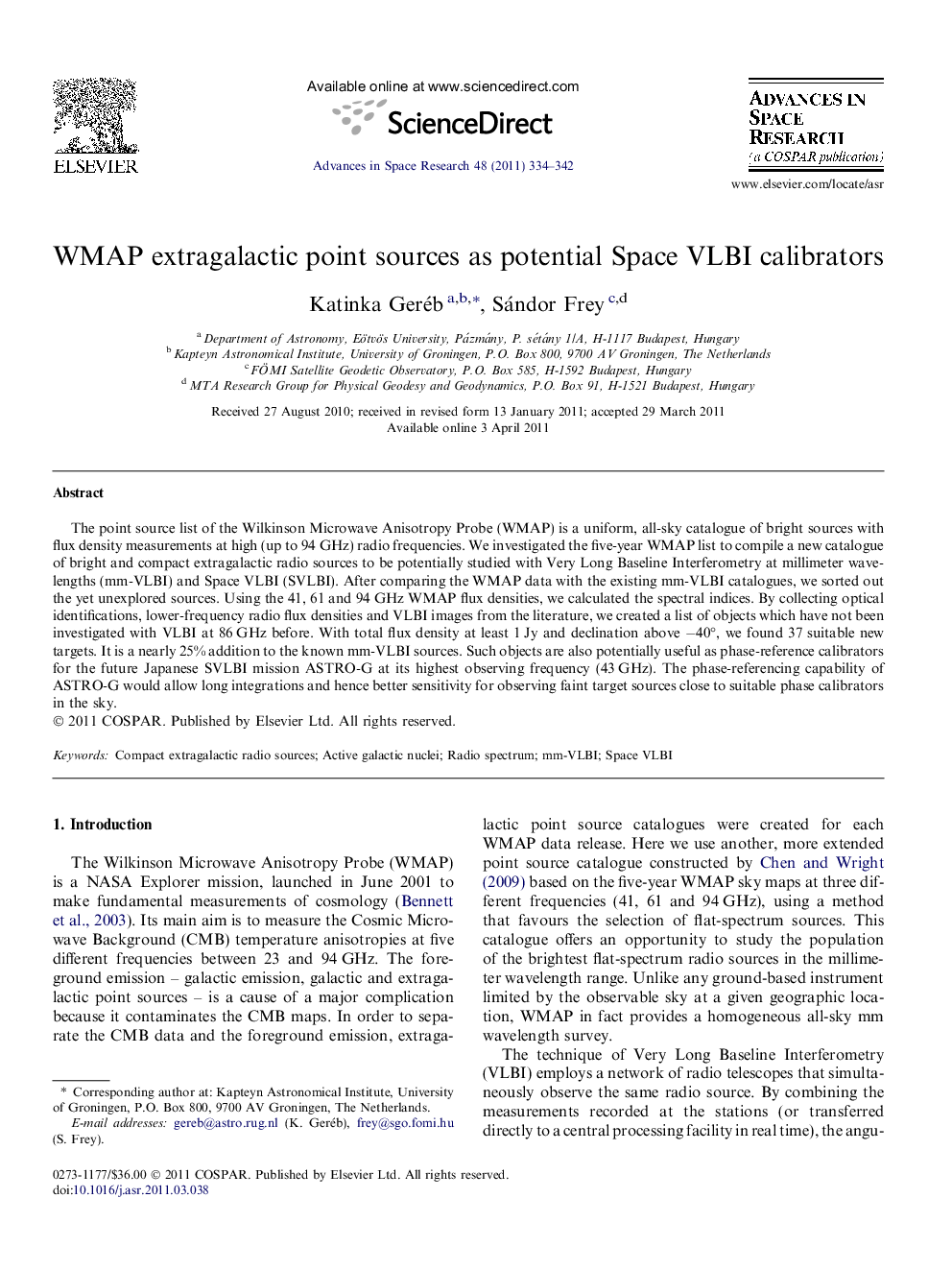| Article ID | Journal | Published Year | Pages | File Type |
|---|---|---|---|---|
| 1765924 | Advances in Space Research | 2011 | 9 Pages |
Abstract
The point source list of the Wilkinson Microwave Anisotropy Probe (WMAP) is a uniform, all-sky catalogue of bright sources with flux density measurements at high (up to 94 GHz) radio frequencies. We investigated the five-year WMAP list to compile a new catalogue of bright and compact extragalactic radio sources to be potentially studied with Very Long Baseline Interferometry at millimeter wavelengths (mm-VLBI) and Space VLBI (SVLBI). After comparing the WMAP data with the existing mm-VLBI catalogues, we sorted out the yet unexplored sources. Using the 41, 61 and 94 GHz WMAP flux densities, we calculated the spectral indices. By collecting optical identifications, lower-frequency radio flux densities and VLBI images from the literature, we created a list of objects which have not been investigated with VLBI at 86 GHz before. With total flux density at least 1 Jy and declination above â40°, we found 37 suitable new targets. It is a nearly 25% addition to the known mm-VLBI sources. Such objects are also potentially useful as phase-reference calibrators for the future Japanese SVLBI mission ASTRO-G at its highest observing frequency (43 GHz). The phase-referencing capability of ASTRO-G would allow long integrations and hence better sensitivity for observing faint target sources close to suitable phase calibrators in the sky.
Keywords
Related Topics
Physical Sciences and Engineering
Earth and Planetary Sciences
Space and Planetary Science
Authors
Katinka Geréb, Sándor Frey,
